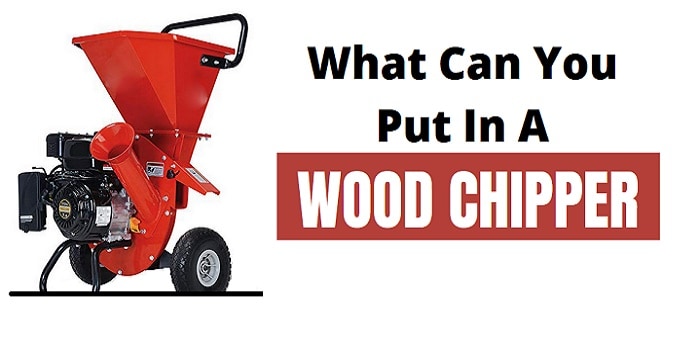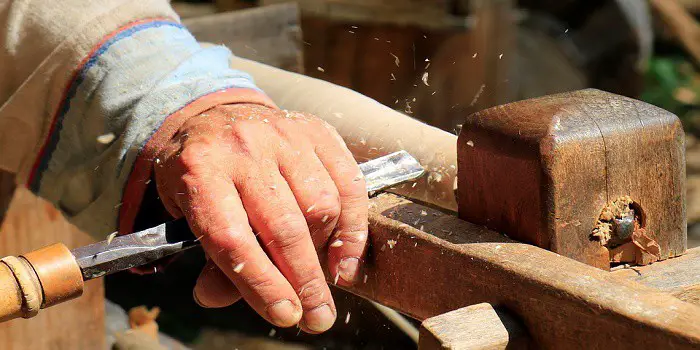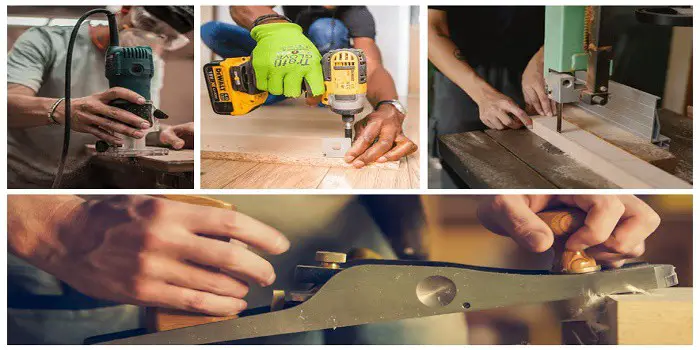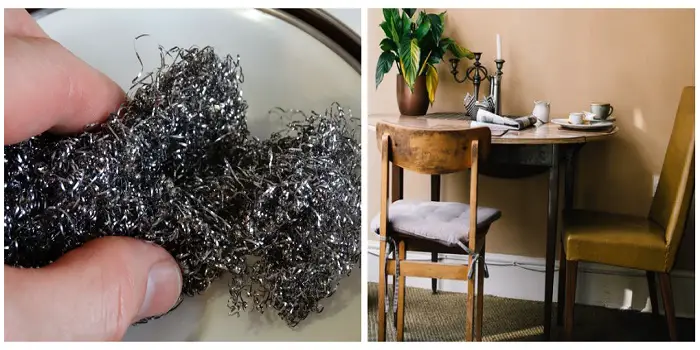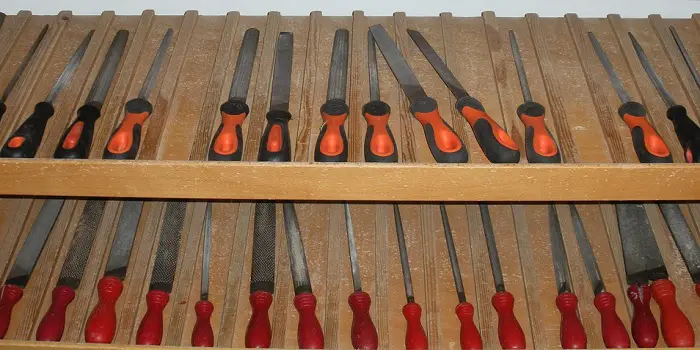
It can be easy to mistake a file for a rasp if you are not that familiar with either tool.
Despite their similarities, there are definite differences between the two.
Each one will perform a specific task that may seem similar to the other at first, but there are differences.
The key difference between both is that a rasp is primarily used for wood while a file is primarily used for metal.
Because they are similar in uses, it’s common to hear one name used for the other. But the fact is that each tool has its grade of fineness or coarseness, due to which they are used for different purposes.
What follows is the definition of files and rasps, what they do, and their advantages and disadvantages.
Woodworking Files
Even though you may have heard the term woodworking file, in truth, there is no such thing.
A file that is primarily designed to work on wood is a rasp.
Files are used on metal, so you will need to know that before selecting one as your tool of choice.
But there are different types of files (I will have the list below), and some are used to sharpen rasps so they can carry out their function.
Uses
Files have long teeth that run across the width of the object.
There are straight-cut files that have parallel teeth. And there are cross-cut files that have teeth at opposing angles.
Plus, double-cut files are more aggressive in terms of their cutting action. This allows more of the metal to be removed.
You may think you can use a file on wood and achieve the same results.
And while initially, that may be true, the file will clog up quite quickly and require frequent cleaning.
Files have different sizes and profiles, which dictate their function. Some will sharpen teeth on saws, while others will deburr metal edges.
The cut of the teeth will determine the aggressiveness of the cuts that it will make.
There are basically four different grades of files. These include:
- Bastard
- Coarse
- Second Cut
- Smooth
Depending on the job you want to accomplish, you will need to select the correct file grade.
Pros and Cons
Keep in mind that files used on wood will be pretty limited. So, for woodworking purposes, here are the pros and cons.
Pros
- Finer Cut, Smoother Finish
- No Power Supply Required
- Portable & Works at Any Angle
- Control the Shaping with Ease
Cons
- Slow Work
- Clogs up Easily, Requires Frequent Cleaning
- You Need to be Highly Skilled to Use a File on Wood
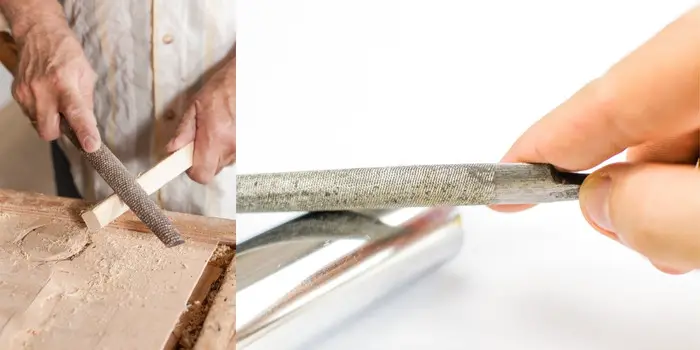
Woodworking Rasps
A rasp may look very much like a file as it is a shaped metal bar with teeth designed to smooth or shape a surface.
The difference is that a rasp has each tooth punched into the tool instead of having the teeth etched or cut into patterns.
A triangular punch is used to punch the individual teeth into a rasp.
One term used with rasps is coarseness. This is the indication of the roughness or smoothness of the rasp.
The level of coarseness is based on the size of the teeth and the distance between them. There are three different methods by which coarseness can be measured.
- American Pattern System
- Grades
- Teeth Per Row
The American Pattern System is a grading system similar to how files are designated.
This means that a rasp listed as second cut, smooth, dead smooth, or coarse, for example, are terms used in the American Pattern System.
Teeth Per Row is rather self-explanatory as it is based on the number of teeth in each row of the rasp. The more teeth in each row, the finer the rasp will be.
Grades are measured from 1, which has the least amount of teeth which are usually large, and up to 15, which has the most amount of usually small teeth. Grade 1 is rarely seen outside of industrial use because of its coarseness.
In selecting the coarseness of the rasp that you want, you will need to become familiar with all three systems.
However, they are relatively easy to remember as the fewer and larger the teeth, the coarser the rasp will be. Conversely, the smaller and more numerous the teeth, the finer the rasp will be.
Put simply, rasps are for softer materials like wood, and files are for metal. While you can use a file in a limited fashion on wood, it is recommended that you find a rasp instead.
And while the function of the rasp seems pretty straightforward, they have different types (as listed below), just like files.
Uses
A rasp offers a far greater purpose in the woodworking shop than the typical file.
Because the teeth of the rasp tend to be shaped much like a mountain, they have an aggressive cut that does not rip into the wood.
Because of the shape of the teeth, they do not clog up nearly as much as a file. This is why they are the preferred choice when working on wood.
Rasps come in different sizes and coarseness to do different jobs.
The better you can find the right type of rasp, the quicker and easier the job you need to perform will be.
Better control and smoother action can be obtained thanks to the random spacing of the teeth.
Pros and Cons
The rasp is made especially for wood which is why it offers considerable advantages.
Pros
- Perfect for Woodworking
- Teeth Resist Clogging
- Wide Variety of Types and Sizes
- Rough Cutting without Ripping into the Material
- Easily Available on the market
Cons
- It Cannot Be Used on Metal
- Fewer Choices of Types Compared to Files
- Cost More than Files
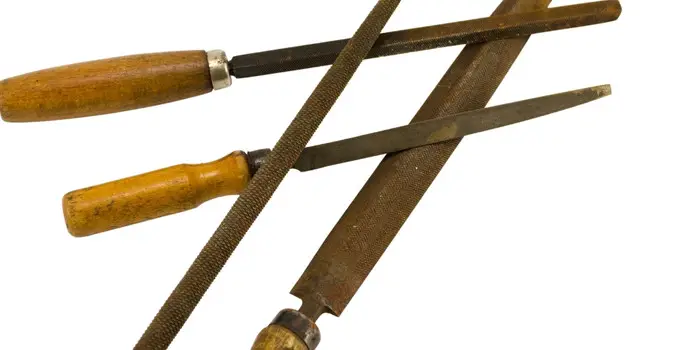
Different Types of Rasps
There are some different types out there that you need to know. These are:
a) Cabinet rasp:
This type of rasp is easy to identify because it has one flat edge while the other side is half-round in shape.
These are the most common types of rasps available for woodworking. The flat and rounded sides are used for shaping the wood.
This allows for a great deal of flexibility when shaping wood which is why they are used so often on cabinets.
b) Cranked Neck rasp:
As the name suggests, the tang and handle are bent or “cranked” to one side.
This allows the tool to be used in narrower or more confined spaces. The face is cut to a slim shape, and the tool is versatile despite its appearance.
c) Horse rasp:
This is the rasp that farriers use to shape the hooves of horses. They are flat, double-sided rasps with file teeth on one side and rasp teeth on the other.
The file teeth are used for hooves that need a considerable amount of trimming until the hoof becomes close to the desired shape.
Then the tool is flipped, and the rasp teeth are used to complete the process.
d) Knife & Square rasp:
The names come from the shape of the rasp. They are both used for similar situations and are mostly applied to wood compared to harder materials such as metal.
e) Modeller’s rasp:
This has the same appearance as a cabinet rasp in that one side is flat while the other is a half-round shape.
The difference is that Modeller’s rasps are smaller and thinner or narrower. This makes them better suited for working in tighter spaces or creating more detail in the material.
f) Needle rasp:
These are small, narrow rasps that are used for small objects. When you need to be precise, this is the type of rasp that works quite well.
You will see this type of rasp used for the creation of musical instruments such as violins, guitars, and the like.
g) Rifflers rasp:
You may hear this tool called a riffler file rather than a rasp, but it functions the same. But the term “file” is not proper as the heads are cut with rasp teeth.
These are small rasps that are used for precision carving. The coarseness of the rasp is measured in the same manner as Swiss pattern files.
h) Round rasp:
As the name indicates, a round rasp is noted for being round with no flat side.
It is mostly used to smooth the details of interiors that are carved for filing straight or spiral lines into the wood.
The way that a round rasp works are by twisting it with each stroke to ensure that all the teeth encounter the surface.
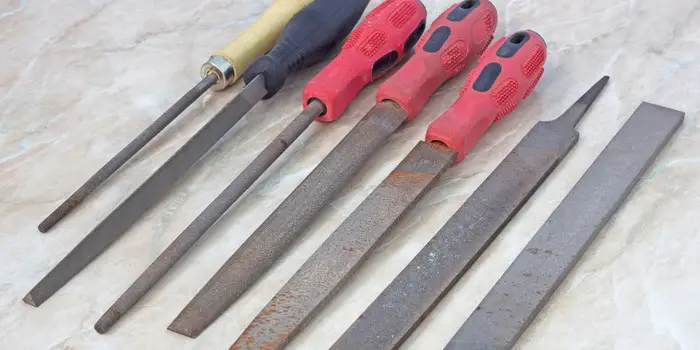
Different Types of Hand Files
There is a myriad of different types of woodworking hand files available.
So many that it can be challenging to find the one you need. And without the right information, it can be easy to choose the wrong one.
What follows are the main types of files that are available. Plus, certain file types are broken down into categories so you can make the best-informed decision about which one is right for you.
1- Knife Files
These are files so named because they resemble a knife in general shape. The standard knife file creates V-shaped grooves but can also work internal angles quite well, thanks to its narrow blade.
There are several categories for the knife file.
Auriform: This one has similarities to a pippin knife file, but it has a convex face instead. You can use auriform files to restore old screw heads and internal file angles or do some filing on concave surfaces.
Half Round: You can use these to descale pipes or smooth concave surfaces. They can also replace hand or flat files in some cases.
Pippin: This is a knife blade that has a rounded back. You will most often see the pippin knife file used by locksmiths as they are perfect for creating keys.
Ring: Similar to the half-round, but narrower. The shape allows them to fit inside circles.
Veneer Knife: This is a specialty file designed to sharpen veneer knives. It is primarily used for that purpose.
2- Machinist Files
These are several categories of machinist files.
Equalling: Similar to pillar files, this type of file will cut differently on its edge compared to its face. This means that you can use the same tool to even out irregularities inside rectangular slots.
Flat: The flat file may be the most recognizable type of file on the market.
As the name suggests, they are flat and can be used for a wide variety of sharpening and shaping uses. They are quite interchangeable with hand files.
Hand: These are hand files that are normally flat and can be used for a wide range of purposes depending on the material. They are most often used for shaping, finishing, and deburring. They are versatile enough to be used in many situations.
Handy: A convenient file in that one side has coarser teeth compared to the other. That way, you can shape and then finish a project all with one file.
Pillar: If you need to file rectangular slots, then this is the file for you. It also has safe edges, so you do not file a surface that you want to leave untouched.
Square Edge Joint: This file will only cut along its edges. If you want to create or deepen a groove, then this is the file for you.
Square File: This type of file is designed to remove material. Mostly used to create larger square/rectangular holes or slots, this type of file is used for that purpose.
Three Square: A triangular version of the square file, these are mainly used to create a triangular groove or to file an internal angle.
Warding: As the name suggests, these files can be used inside thin slots, as you might find on the warding of locks.
3- Marking Files
Marking files are another set of files that have a half-round shape.
However, when used on their flat side, they lower the risk of accidentally filing a surface in case the corner meets it. Some of the more common marking files include the following.
Checkering: There is a unique checkered pattern found in the teeth of this fil. If you’ve seen the checkered pattern on gun handles, such as revolvers, then you have probably seen the results of a checkering file.
Crochet: A multi-purpose file with a rounded edge and a flat face. You can use them inside slots that have rounded edges or semicircular grooves.
Round: This is a marking file that has a tapered point. This means that they can be used to create fine details in the project. You can also enlarge round holes or smooth out concave surfaces.
Round Edge Joint: Since they are only cut on their rounded edges, they can create semicircular grooves with straight sides.
Thread Restorer: This file is designed so that its teeth fit into the screw threads, remove any blockages, or clean out any residue to restore a crew. It can also help correct any light damage to the screw threads.
4- Slitting Files
These are diamond-shaped files that can work inside internal angles that are wide or tight. The types of slitting files include the following.
Barrette: Cuts only on a single side. With this, you can also file the inside teeth of gear wheels.
Crossing: Has two convex faces, one being fuller than the other. Use inside cogs of clockworks.
Fret End: Used to debur the frets of guitars
Ignition Point: Used to clean the connector points in the ignition circuitry
Long Angle Lathe: Used to shape material when it is on a lathe.
Needle: A thinner version of Swiss pattern machinist files; these are more precise and accurate
Oval: File concave surfaces or flipped to create concave grooves
Slotting: Cut slots into the heads of screws
5- Saw Files
You may sometimes see the term “sharpening files” which is the same thing. The purpose of a saw file is to sharpen bladed metal tools that normally have teeth.
Because the teeth of a typical saw are jagged, the saw files may come in a triangular or diamond shape so they can reach in-between the teeth.
This allows for the proper sharpening of the saw.
Cant Saw: This type of file is used on saws that have teeth that are irregularly shaped. These are teeth that have an angle between them that is not the standard 60 degrees. Saws with M-shaped teeth are a good candidates for the cant saw files.
Chainsaw: As you might guess, chainsaw teeth need a special type of file for sharpening purposes. Most chainsaw files are round, although they do come in a variety of shapes.
Crosscut: If you have a crosscut saw, then you will need a crosscut file to sharpen it.
Double-End: Basically, the double-end saw files look like two tapers saw files that have been glued together. Their advantage is that they can sharpen saws many times before they become too worn out from use.
Taper Saw: Like saw files, there is also a taper saw file designed to sharpen the teeth of saws. They are triangular and work well on standard manual saws.
A Few Other Types of Files
Besides the above, some more common files are on the market. These include:
- Aluminum: Used on soft metals, they feature gullets that are undercut between the teeth, which prevent clogging.
- Diamond: Same as most files but uses diamond or tungsten carbide grit instead of traditional teeth.
- Escarpment: When you need to work on the inside of clocks and similar mechanical devices.
- Flexible: Made from sprung steel. It can be convex or concave. A two-handed file.
- Japanese Carving: These have a unique set of teeth that can both shape and smooth wood surfaces.
- Lead Float: Like aluminum files but are coarser to work with soft metals.
- Millenicut: The grooves act as chip breakers which remove materials quickly from the surface
- Vixen: Curved teeth for aggressive shaping.
- Web: These are diamond-shaped saw files used to sharpen rotary blades found on web saws.
- Mill: This file is used to sharpen other flat-bladed tools along with leveling teeth on a saw blade.
- Auger Bit File: The auger bit file is designed to get inside the spiral shape of the auger bit so it can be properly sharpened.
Final Thoughts
By now, you should have understood the significant differences between files and rasps and why you should choose the latter for your woodworking efforts.
Although files can be used on wood, it is not recommended as they tend to clog and sometimes get the wrong type of effect.
Rasps are for woodworking; they should be used on wood and not metal.
When working with materials like wood and plastic, rasps are pretty efficient and clog far less often than files.
Of course, you should get the right type of rasp for the job, and you can expect to pay more for them even if they are readily available.

Hi, I am Mark Garner a professional carpenter, woodworker, and DIY painter. I live in the small city of Peoria, Arizona as a semi-retired woodworker. I have started this blog with a simple motive to help you with my wood experience in this sector. If you like to know more about what I love doing and how it all got started, you can check more about me here.

